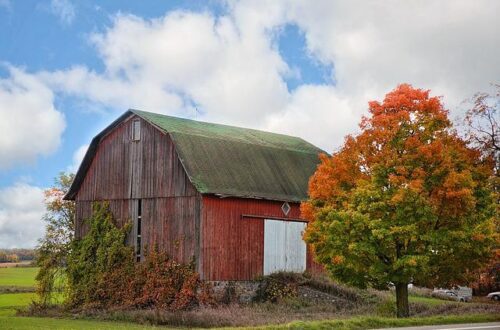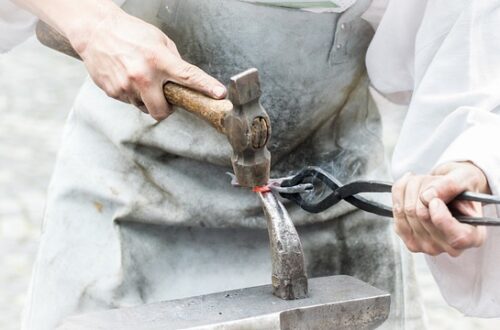Apartment Homesteading: The New Way to Live Sustainably

Want to live more self-sufficiently but feel you’re trapped in an urban apartment? Have no fear, apartment homesteading is here!
Urban dwellers across the country are finding that homesteading isn’t just for rural farmers on 100 acres. Apartment homesteading is a growing trend among those who want to live a more sustainable, self-sufficient lifestyle.
From DIY cleaning products, to rooftop gardens and energy independence, apartment homesteaders are finding ways to grow their own food–and in some cases animals–right in the heart of the city.
There are plenty of ways to homestead in an apartment, and many people are surprised to learn just how easy it is.
By following some of these tips, you can soon transform your urban dwelling into your very own mini homestead oasis.
{Affiliate links included below}
What is apartment homesteading?
For many people, the traditional homesteading lifestyle conjures up images of a rural farmhouse with a sprawling garden and cows and horses wandering around. But what if you could bring those same principles of self-sufficiency and sustainability to city living?
Apartment homesteading is a growing movement of people who are doing just that–finding ways to grow their own food, raise animals, and live more sustainably in small spaces.
Living the homesteading life doesn’t necessarily mean that you have to own a big piece of land. Apartment homesteading is a great way to get started with living a more sustainable lifestyle–right where you are.
The benefits of apartment homesteading
There are many benefits to apartment homesteading. Some of the top ones include reducing your ecological footprint, becoming more self-sufficient, and saving money.

Reducing your ecological footprint is one of the most important benefits of apartment homesteading. By growing your own food and using less energy, you can significantly reduce the amount of resources you consume. This not only helps the environment but also saves you money on your utility bills.
Becoming more self-sufficient is another great benefit of apartment homesteading. When you grow your own food and produce some of your own energy, you become less reliant on outside sources. This can give you a sense of security and independence that is very empowering.
Finally, apartment homesteading can potentially save you money. By growing your own food and generating your own energy, you can avoid some of the costs associated with traditional living.
How to get started with apartment homesteading
There are several things you’ll need in order to start homesteading in an apartment. Here we go over several of the easiest ways to take the plunge into the homesteading way of life.
Growing your own food
One of the simplest ways is to start growing your own food. This can be done by setting up a small herb garden on your windowsill, balcony, or rooftop. If your apartment complex has an open grassy area, you could look into starting a community garden with some of your like-minded apartment neighbors.
You can also try starting some vegetables or herbs from seeds. Some apartment homesteaders use a hydroponics or aquaponics system to raise their own fresh veggies and herbs.
Composting
Aside from growing your own food in your apartment, you can also upcycle and compost household waste. Composting is a great way to reduce waste and make good-for-you fertilizer for your plants. Fortunately, you can do this from your apartment kitchen.
Use a container with a lid and handle to store the food scraps. A stainless steel or ceramic compost pail is best, but you can also make do with an old ice cream pail. If you have a communal space or balcony, a compost tumbler is another great option.
A compost bin can hold anything that doesn’t go to the trash, including eggshells and kitchen vegetable scraps. Compost made in an apartment can make your garden soil much richer and nutrient-rich. It’s a great way to reduce food waste and reduce your impact on the planet. You can start small and build from there, but remember that small steps will pay off in the long run.
Canning
Canning food is one of the most basic homesteading skills, and is easy to do even in a small apartment kitchen.
You’ll need either a pressure canner or a water bath canner, some Mason jars with lids, and a reliable canning recipe book.

Whether you’re canning produce you raised, or farm goods you purchased, preserving your own food is a valuable and fun activity that makes you feel like a true homesteader!
Make your own cleaning products
Another way to homestead in an apartment is to begin making some of your own cleaning and personal care products. DIY recipes for things like laundry detergent, shampoo, and toothpaste are widely available online.
With all the toxic and otherwise unhealthy ingredients found in cleaning and personal care products, it only makes sense to go for the purest, natural ingredients when making your own products.

Generate your own electricity
No, we’re not talking about starting your very own utility company. If you have access to a window or balcony that gets bright sun for several hours each day, you can use solar power to create energy and reduce your dependence on the electrical grid.

You don’t have to be an electrical engineer to use solar panels. Start small with a basic solar panel set up that includes a power station. You won’t be able to power your refrigerator or AC unit, but you could at least power your laptop, phone, or other lower drainage devices.
If you’re more ambitious or have more funds, a new breed of solar panels designed for easy installation on apartment buildings is quickly gaining popularity among those looking to lower their energy bills and shrink their carbon footprints.
These plug-and-play solar panels, which can be quickly set up, are a far cry from the bulky and expensive rooftop systems that have been the only option for apartment dwellers until now.
With the cost of solar panels falling rapidly and utilities across the country starting to offer incentives for solar power, there has never been a better time to go solar.
Animals suitable for apartment homesteaders
This last option will not work for every apartment resident, but in some cases you may even be able to raise some animals. Be sure to check city and apartment rules before embarking down this path.
Quail are an increasingly popular homesteading bird. They are easy to care for and require little space, making them perfect for those living in apartments.
A single bird only needs about 4 square feet of space, so a pair of quail can easily be kept in an apartment or other small living space.
Although quail can be used for both eggs and meat, you’ll likely only be interested in egg production in an apartment situation.

If you have a larger community area in your apartment complex, consider looking into chickens or goats. Many cities allow limited numbers of these animals to be raised within the city limits. Have an enclosed, sheltered spot where you could put a chicken coop or goat pen would be a fantastic addition to your small urban homestead.
The challenges of apartment homesteading
While city living in an apartment has many benefits, it also comes with disadvantages.
For many people, the allure of homesteading is strong. The idea of being self-sufficient, growing your own food, and living off the land is appealing. However, for those who live in apartments, the challenge of homesteading can seem daunting.
One of the biggest challenges of apartment homesteading is space. Most apartments are small, and lack the outdoor space that is necessary for many homesteading activities. This can make it difficult to garden, keep animals, or even have a compost bin.
This means that you have to be more creative in how you use your space. For example, you might want to consider vertical gardening or using hanging planters.
Another challenge is that you might not have access to a lot of sunlight. This can make it difficult to grow certain plants or vegetables, or to produce electricity using solar panels. If you are considering apartment homesteading, it’s important to research which plants will do well in low-light conditions, or where to position solar panels for maximum sun exposure.
Final thoughts on apartment homesteading
While apartment homesteading isn’t the same as large-scale farming, you can still take steps towards more sustainable lifestyle choices.
By doing things like growing some of your own food and making your own cleaning products, you can reduce your reliance on commercial food sources and chemical-laden products.
While it may seem daunting, it’s important to remember that small steps can make a big difference in the long run. Be open-minded and curious about your options when it comes to moving toward sustainable living.
With some thought and ingenuity, you can always find new ways to be more self-sufficient. For example, while you may not be able to grow a large garden, you can make your own herbal remedies and preserve fruits and vegetables.
Pursuing a homesteading lifestyle in an apartment has many benefits. It can provide you with fresh food, reduce your environmental impact, and help you lead a healthier, more fulfilling life.










